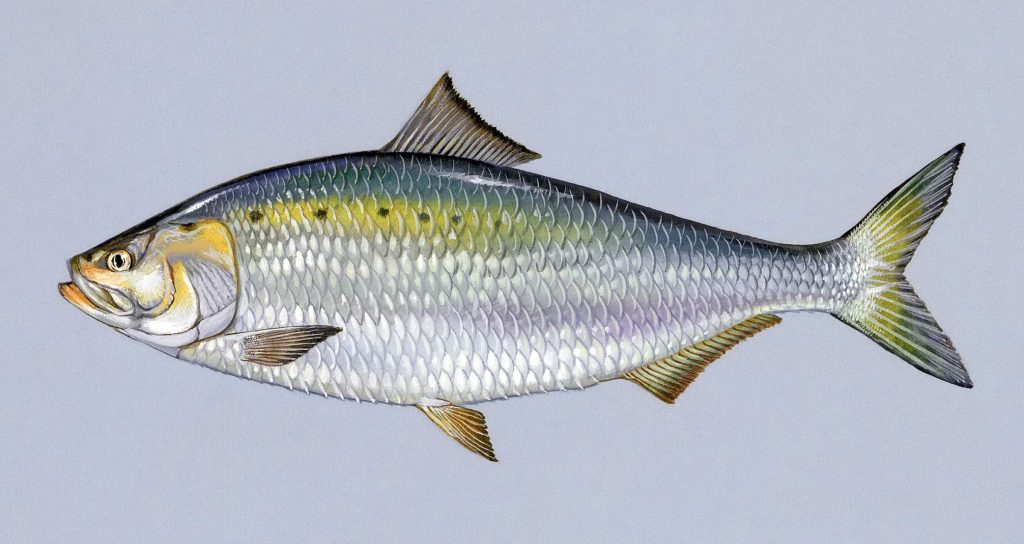Environment
Short Takes
Georgia’s new data center rule increases local controlDecember 1, 2025

By David Pendered
BEAUFORT, N.C. – The downward spiral of the once-abundant American shad can be traced to an era of aggressive fishing techniques that arose after War of 1812, according to one of the latest programs at the North Carolina Maritime Museum.
By the 1840s, competition for shad was so intense that fisher folks were suing each other in court over access to the shad. The shad is a type of herring that sustained Native Americans, colonists and subsequent settlers, David Bennett, the museum’s curator of maritime history, said during the Feb. 23 Maritime Heritage Series, “North Carolina’s Antebellum Shad and Herring Fishery.”
In 1844, one such case that reached the North Carolina Supreme Court helped establish water rights in antebellum North Carolina. A fisherman contended that he had leased fishing rights for a portion of the Albemarle Sound and a competitor had infringed on the leased fishing grounds. The lower court ruled for the defendant and the Supreme Court upheld the lower court by ruling that only a government can issue exclusive rights to fish in any navigable water, according to an account of the Collins v. Benbury case posted by Harvard Law School.

In the presentation, Bennett focused his hour-long talk on the period from 1815 to the start of the Civil War. This was a golden age for fishermen of shad, which was harvested in waterways along the Eastern Seaboard to provide a cheap source of protein for human consumption and as fertilizer. The fish were salted or placed in barrels of brine and shipped to consumers. The catch was upwards of 40,000 tons a year in Virginia in the 1840s and had fallen to 4,000 tons a year by the 1880s, according to a report by Virginia’s Department of Wildlife Resources on The History of American Shad in Virginia.
Shad fishing was a challenging business.
A fully laden net could weigh well over 250,000 pounds, given that nets could hold from 50,000 to 100,000 shad and shad weigh from 3 pounds to 8 pounds each. Nets were up to 2,500 yards long and were pulled in with winches powered by men or animals and, eventually, engines. To place the net, boats with 10 oars would go into the waterway and drop nets that often were buoyed with cork floats, Bennett said.
Harvesting the net could be hampered by snags on the bottom of the river or sound. To clear the bottom, fisher folks would send men into the water to retrieve snags that consisted of stumps, logs and other debris.
Once a fully laden net was ashore, women were tasked with cleaning the catch. The target rate of preparation was 30 fish a minute, Bennett said, meaning that every 2 seconds a fish was to have its head removed and the fish readied for placement in a salt box or brine barrel. Competition was keen for women able to perform at these levels, Bennett said.
Bennett said fisheries preferred to employ free Black workers, as opposed to slaves, because the pay of free Black individuals was less than that of a slave. Slave owners charged a premium to lease slave labor for harvesting shad because the work was dangerous and the camps a breeding ground of diseases, Bennett said.

Today, the shad is defined as “depleted,” according to an interstate compact Congress established in 1942 to oversee migratory fishing resources, the Atlantic States Marine Fisheries Commission. Recovery is hampered for familiar reasons – dams, according to the report:
Here’s how the commission portrays the situation facing the recovery of the shad population:
In Georgia, state wildlife officials are working to restore shad populations. Commercial shad harvesting is allowed in two rivers, the Altamaha and Savannah rivers, and recreational fishermen have targeted shad in the Ocmulgee, Satilla and St. Mary’s rivers, according to a report by the Georgia Department of Natural Resources, the American Shad Project. Georgia’s updated shad sustainable fishing plan was adopted in 2020

0